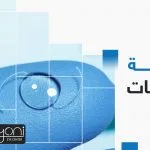Implantation of corneal ring segments is one of the modern treatment options for keratoconus. The procedure is performed by inserting a half-ring or full-ring segment into the cornea to improve visual clarity. In this article, you can learn more about the details of the procedure.
What Is the Purpose of Corneal Ring Implantation for Keratoconus?
Corneal rings help stabilize keratoconus in patients who suffer from astigmatism, where the cornea loses its regular shape and becomes irregular—causing blurred and distorted vision. ICRS implantation reduces the symptoms of astigmatism and improves overall visual quality.
Benefits of Corneal Ring Implantation
This procedure aims to treat keratoconus patients and is considered an effective option to restore the natural curvature of the cornea. Corneal ring implantation is also a suitable alternative for patients who are not ready for corneal transplant surgery, as it offers noticeable improvement in vision.
However, doctors often recommend wearing glasses after the procedure for best clarity.
Steps of Corneal Ring Implantation Surgery (ICRS)
The ophthalmologist explains the steps of the procedure to the patient as follows:
- Topical anesthetic eye drops are applied.
- An eyelid speculum is used to keep the eyelids open during the procedure.
- The surgeon uses femtosecond laser technology to create a tunnel within the corneal tissue (some surgeons may create the tunnel manually).
- The ring segments are inserted into the corneal tunnel.
- At the end of the procedure, antibiotic and protective eye drops are applied, followed by a plastic eye shield for protection.
- The ICRS segments are placed in the peripheral corneal zone, leaving the central visual axis untouched. Many surgeons prefer the femtosecond laser technique for accuracy, while others still perform manual implantation.
Expected Results After Corneal Ring Implantation
Many patients report noticeable improvement shortly after surgery. In patient testimonials, they describe a vision improvement of up to 50% during the first week, with most returning to work within 1–2 days.
Who Is a Suitable Candidate for Corneal Ring Implantation?
Ophthalmologists examine keratoconus patients carefully to determine eligibility.
Patients with corneal scars or opacities are usually not suitable candidates because the cornea must be clear. The surgeon also measures corneal thickness, which must be adequate for safe ring placement.
Cost of Corneal Ring Implantation in Keratoconus (Dubai)
Corneal ring implantation is widely performed in Dubai, but the cost varies based on several factors, including:
- The technique used to create the corneal tunnel (manual vs. femtosecond laser).
- The type of clinic or hospital.
- Surgeon’s experience and expertise.
- The type and brand of ring segments used (e.g., Keraring, INTACS).
Patients in Dubai can book consultations at
Sharif Eye Centers – Dubai Healthcare City
where experienced cornea specialists offer advanced keratoconus treatments, including ring implantation and customized diagnostic planning.
Surgery Details
Postoperative Instructions
- No exposure to dust for 2 days to avoid infection.
- No rubbing or pressing on the eyes for one week.
- No makeup or eyeliner on lashes or eyelids for one week.
- No colored contact lenses for one month.
- No swimming, football, or contact sports for one month.
- Face washing, showering, and ablution are allowed on the same day—without rubbing the eyes.
- Prostration during prayer is allowed after 1–2 days.
- Using mobile phones, computers, or watching TV is allowed from the next day, but avoid eye strain during the first week.
Procedure Duration
3 minutes per eye.
Required Tests
- Refraction test (eyeglass prescription)
- Pentacam corneal imaging
You may complete these tests before visiting Dubai and send them to us via email or mobile.
Required rest before travel:
2 days






